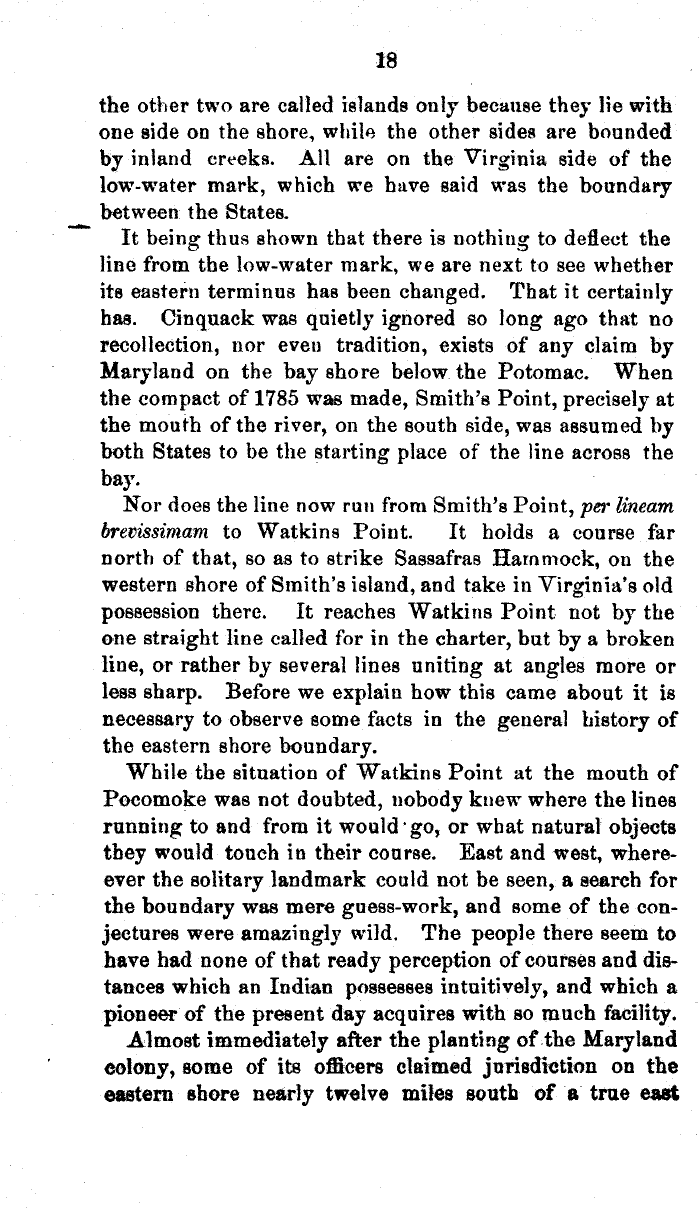| >l8
the other two are called islands only because they lie with
one side on the shore, while the other sides are bounded
by inland creeks. All are on the Virginia side of the
low-water mark, which we have said was the boundary
between the States.
r It being thus shown that there is nothing to deflect the
line from the low-water mark, we are next to see whether
its eastern terminus has been changed. That it certainly
has. Cinquack was quietly ignored so long ago that no
recollection, nor even tradition, exists of any claim by
Maryland on the bay shore below the Potomac. When
the compact of 1785 was made, Smith's Point, precisely at
the mouth of the river, on the south side, was assumed by
both States to be the starting place of the line across the
bay.
Nor does the line now run from Smith's Point, per lineam
brepissimam to Watkins Point. It holds a course far
north of that, so as to strike Sassafras Hammock, on the
western shore of Smith's island, and take in Virginia's old
possession there. It reaches Watkins Point. not by the
one straight line called for in the charter, but by a broken
line, or rather by several lines uniting at angles more or
less sharp. Before we explain how this came about it is
necessary to observe some facts in the general history of
the eastern shore boundary.
While the situation of Watkins Point at the mouth of
Pocomoka was not doubted, nobody knew where the lines
running to and from it would-go, or what natural objects
they would touch in their course. East and west, where-
ever the solitary landmark could not be seen, a search for
the boundary was mere guess-work, and some of the con-
jectures were amazingly wild. The people there seem to
have had none of that ready perception of courses and dis-
tances which an Indian possesses intuitively, and which a
pioneer of the present day acquires with so much facility.
Almost immediately after the planting of the Maryland
' colony, some of its officers claimed jurisdiction on the
eastern shore nearly twelve miles soutb of a- true cad
|

